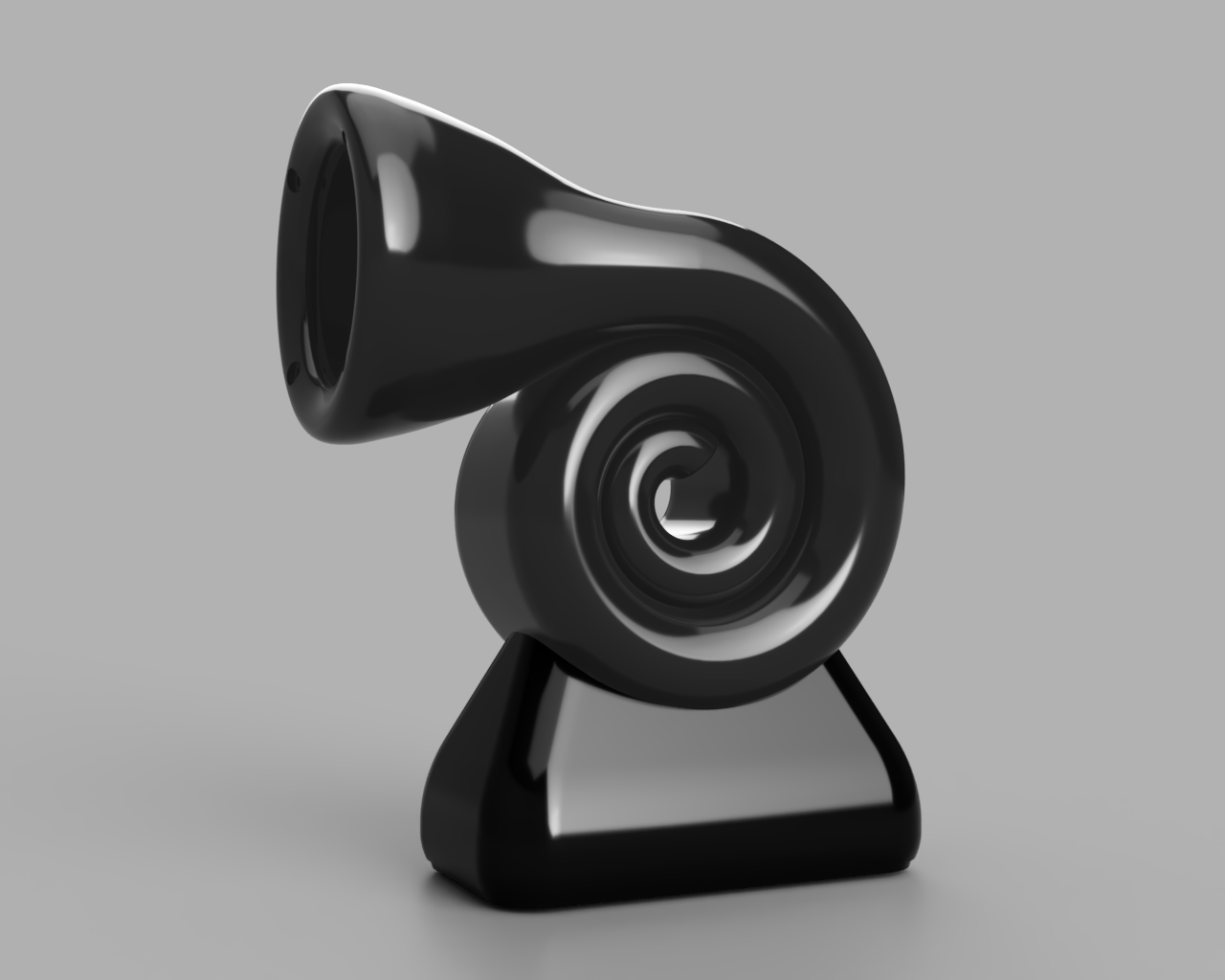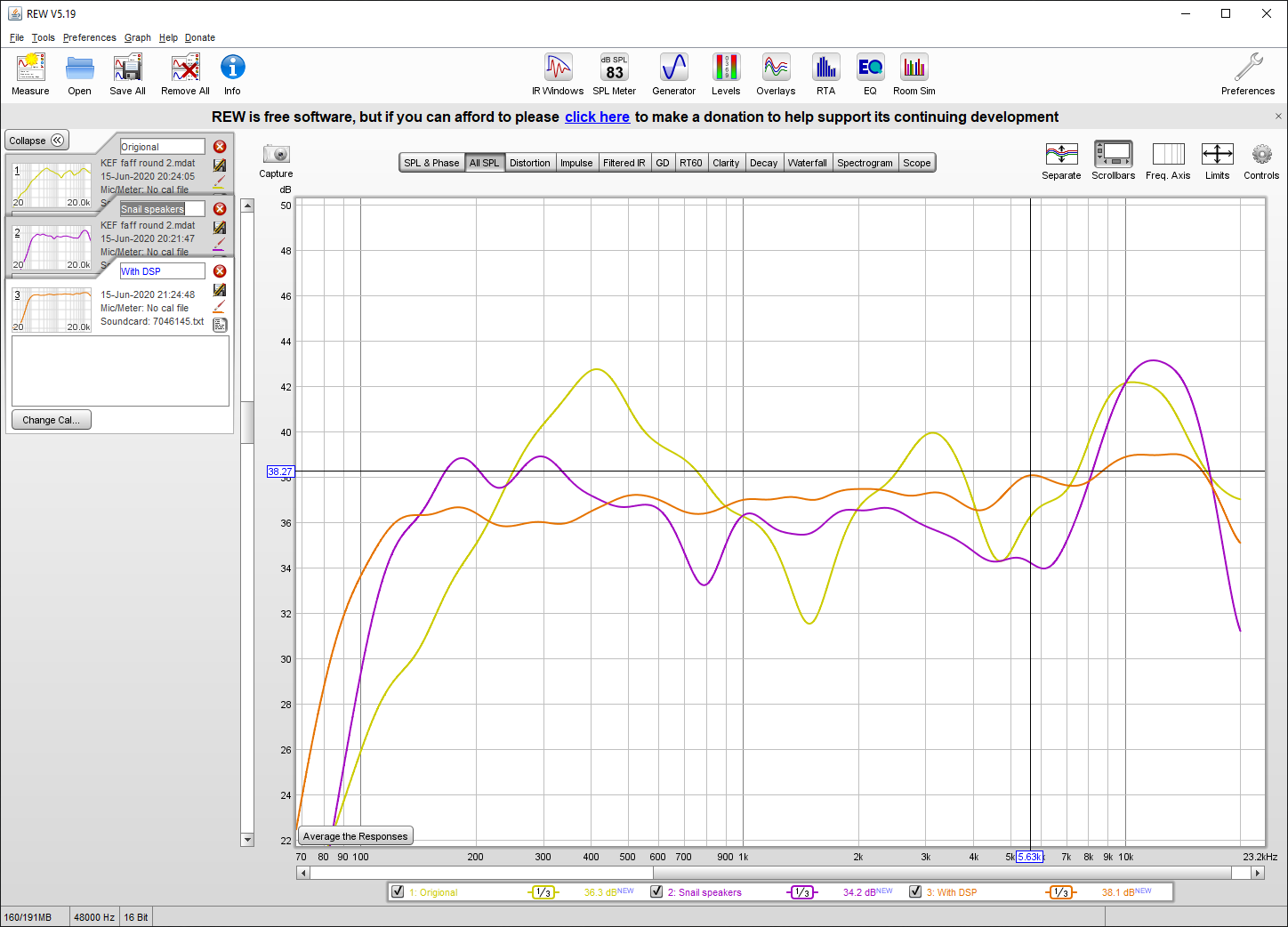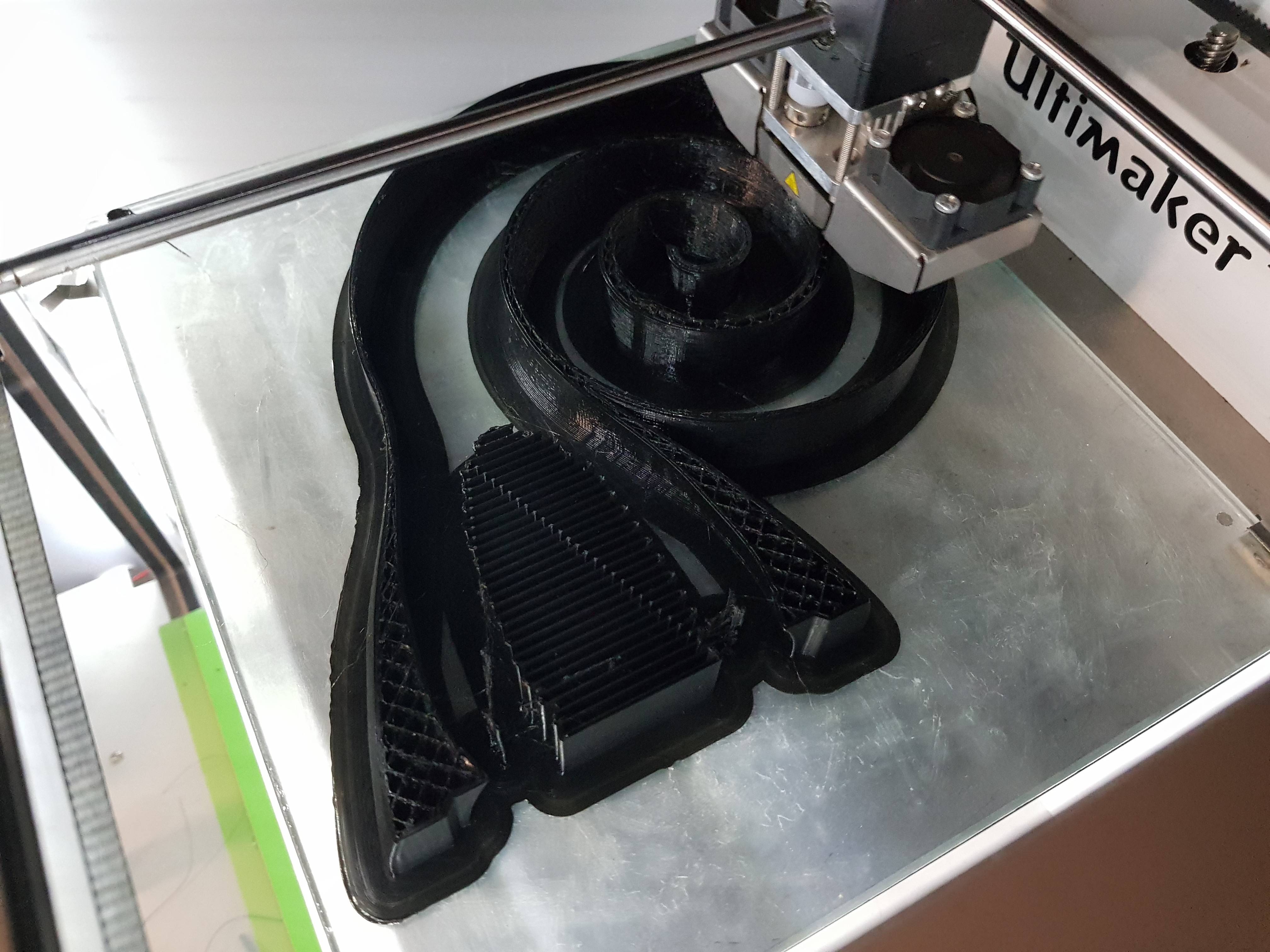-
The fix
07/04/2020 at 22:41 • 0 commentsOur pet demon poked both tweeters and so gained her first lesson in resonance modes of acoustic emitters. There were very subtle differences in response curve of the tweeters dented and in “fixed” condition.
Usual method of fixing them was implemented. To pull the tweeter dome back out, made a gasket from blue tack and pulled a vacuum in front of it. Obviously this means sucking on a tube...
The demon might not jab tweeter cones again for fear of another impromptu science lecture.
In other news, mini-DSP implemented for flatter response and smoother bass roll off.
-
The end
06/20/2020 at 17:46 • 0 commentsStands printed, crossovers installed and some foam stuck to the base. Photo taken - and done.
Then lots of tweaking and more faffing about with dampening. After a few days I'd started to notice the port output had too high a Q. Very slightly like someone attempting to over emphasise the bass frequencies of their voice. Cured with a little low density foam in the end of the line.
Oh do they sound good, with a flat (compared to any other speakers I've owned), from a little over 100 Hz, well passed the 12 kHz I can her up to and all the way to a (pointless) 20 kHz. Most impressive is the clarity of voice. The crossover is around 4 kHz, so well above the maximum for talking/singing - so there's no phase issues or energy storage going on there to smear the output. Obviously these are not any use for bass heavy music. That's not their point. They've very easy to listen to and great for their purpose - PC speakers.
-
Day - who knows...
06/19/2020 at 14:31 • 0 commentsWith the important bits printed and the dampening tuned. The still, cold 3D printer needed something to do.
The stands have been drawn and the first one is being oozed into place by a little robot in the garage:
![]()
Something seems to have been lost in the render settings in Fusion 360. The materials were supposed to be the same. Hmmm.
Anyhow, the base is hollow for fitting in the crossover. Designed to be printed without support so has a pent roof cavity.
Hopefully a couple of days away from having them all together.
-
Day X + 1
06/15/2020 at 20:33 • 0 commentsSuccess!
Both speakers printed. They sounded pretty good without any equalisation, though around 10 kHz there's a little more harshness than desired. But that's nothing to do with the transmission lines. It's the drivers themselves. Below is a set of plots of the response curves:
The blue plot has much better flatness than the original speakers. A little ironing with Eaualizer APO and they're great. I did attempt to meddle with the crossover, but that can of worms requires swapping in and out lots of capacitors and inductors. Using a DSP is much easier. Besides, the crossover had correct phasing, any meddling could have crippled that.
Now to draw up and print some stands and I'm done.
-
Day X
06/14/2020 at 19:57 • 0 commentsImportant bits printed (mounts not even designed). Having fun ramming fluff into the transmission lines to dampen them. Certainly more art than science. Fortunately, REW, a calibrated microphone and lots of faff are bringing back the science part (iterate and save all the frequency responses). Will report more fully soon.
in the mean time:
- REW - Room EQ Wizard (Get it, download it, enjoy it. All sorts of awesome if you like audio - and it's free):
- MiniDSP calibrated measurement microphone (does cost money, but... well, I wanted one):
-
Day N
06/09/2020 at 18:29 • 0 commentsOld printer set up and printing the last half shell. First attempt was on a work one - a Kodak printer - suggest not buying into Kodak.
![]()
-
Day ?
06/08/2020 at 15:21 • 0 commentsMinor derailment of the project - printer is broken.
-
Day 11
06/04/2020 at 10:01 • 0 commentsAll the bits should have finished by now. But the printer glitched on the last half shell. Boo.
Tonight I'll get it going again. In the mean time, the printer is busy printing a bass reflex enclosure for comparison. There will be several ways of testing the little drivers:
- Original closed back units
- New bass reflex units with various length ports and variations of stuffing
- Free air
- The transmission line without stuffing and through various attempt of getting it to behave by ramming fluff into it
The above measurements will be made using a calibrated microphone and REW. It's a great combination.
-
Day 10
06/04/2020 at 09:54 • 0 commentsPressed print.
-
Day 9
06/02/2020 at 15:48 • 0 commentsPressed print.
Speakers that look like snails
Transmission line speakers - attempting form and function.
 Lightning Phil
Lightning Phil

